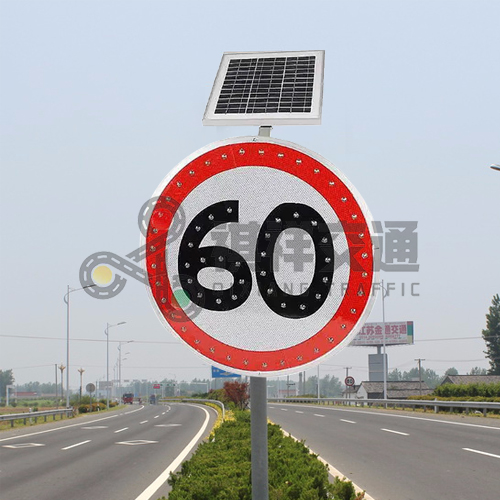Solar speed limit signs are an important part of traffic management in today’s world. As the world continues its transition to cleaner and more sustainable energy, the use of solar-powered speed limit signs is becoming more common. These signs provide an environmentally friendly and cost-effective solution to road speed regulation needs. But where exactly do we need solar-powered speed limit signs?
A. School zones
One of the key places to install solar speed limit signs is in school zones. These signs are vital to keeping children safe when traveling to and from school. By setting up solar speed limit signs in school zones, drivers can be reminded to slow down and obey the speed limit, reducing the risk of accidents and ensuring the safety of young pedestrians.
B. Residential areas and neighborhoods
In addition to school zones, residential areas, and neighborhoods are other important locations for installing solar speed limit signs. These signs encourage drivers to reduce their speed and help create a safer environment for pedestrians, cyclists, and residents. Speeding through residential areas not only poses a danger to the people living in the area, it can also lead to increased noise pollution and a decrease in the overall quality of life for residents.
C. Construction zones
Construction zones are also prime locations for solar-powered speed limit signs. During ongoing road construction and maintenance, drivers must adjust their speeds to ensure the safety of road workers and other motorists. Solar speed limit signs can be easily installed and repositioned as construction areas change, making them a flexible and practical solution for managing speed limits in these areas.
D. Along motorways and country roads
Another important location for solar speed limit signs is along motorways and country roads. These areas often have higher speed limits, and solar speed limit signs can remind drivers to maintain a safe speed. Because hazardous situations can occur on these roads, such as sharp turns, wildlife crossing, or limited visibility, it is vital that appropriate speed regulation is in place to prevent accidents and ensure the safety of all road users.
E. Car parks
Car parks are also ideal locations for installing solar-powered speed limit signs. Many car parks experience high pedestrian and vehicular traffic, so maintaining safe speeds for all users is crucial. By installing solar speed limit signs, drivers can be reminded to slow down and stay alert, reducing the risk of collisions and creating a safer environment for everyone.
F. Backcountry areas, parks, and trails
In addition to these specific locations, solar speed limit signs are also useful in areas where traditional power sources are not readily available. Backcountry areas, parks, and trails can all benefit from the installation of solar-powered speed limit signs, providing a sustainable and reliable solution for managing speed limits in these areas.
Additionally, the use of solar-powered speed limit signs is in line with the global push for sustainable and environmentally friendly solutions. Solar energy is a renewable, clean energy source, making it ideal for powering speed limit signs. By harnessing solar energy, these signs can operate independently, reducing reliance on traditional energy sources and lowering overall operating costs.
In summary, solar speed limit signs are needed in a variety of locations, from school zones to highways to parking lots. These signs play a vital role in promoting road safety and ensuring the well-being of all road users. By using solar speed limit signs, we can create a safer, more sustainable, and greener transportation environment. It is important to consider where these signs are needed most and proactively implement them in these areas to promote safer and more efficient traffic management.
If you are interested in solar speed limit signs, welcome to contact road sign company Qixiang to get a quote.
Post time: Dec-29-2023







